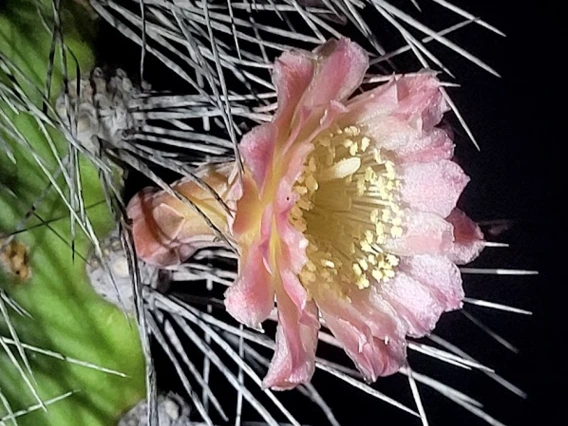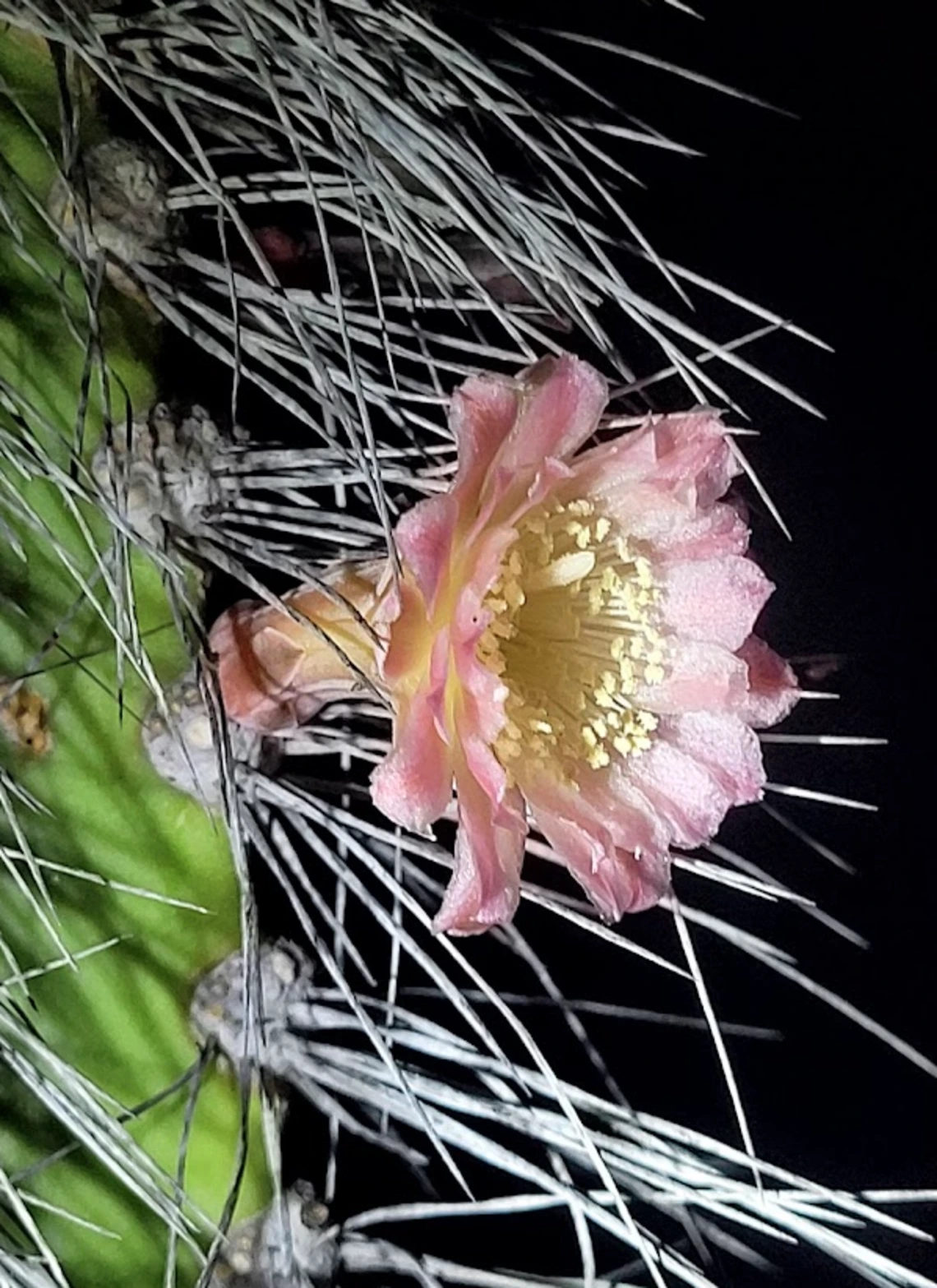Family: Cactaceae
Compound: Pac sch
Synonyms: Cereus schottii, Lophocereus schottii, Pilocereus schottii
Geographic Origin: extreme southwestern US, northwestern MX
Characteristics: A slow growing cactus made up of many columnar stems growing from a woody base. The green to pale blue-green and waxy stems reach up to 4.5m (15ft) in height, possessing 5-9 ribs lined with areoles each with spines ranging from white to black in color. While the spines on young stems are small and short, the tops of the older stems develop much denser spines giving a shaggy appearance. Pale pink flowers appear near the tops of the older stems in the summer and develop into small, bright red, spineless fruit. Inside the fruit is a small amount of red flesh and small black seeds.
Natural History: Found between 304-609m (1,000-2,000ft) near desert washes, in sandy flats, bajadas, and gentle slopes. Typically grows below trees or in full sun and can form dense stands with hundreds of arms. In this clusters of plants, many dead arms scattered on the ground below the living ones provide shelter for wildlife. The flowers are also used by pollinators and fruits eaten by animals.
Cultivation Notes: Easily grown from seed or cuttings. When grown in containers, substate should be well draining to prevent root rot, and excessive organic material should be avoided. In the ground, poorer substates are tolerated. If growing in cooler areas than the plant naturally occurs, small blankets or upside-down Styrofoam cups should be placed over the tips of each arm when temperature go below their tolerance level to protect from frost damage.
For general cactus and succulent propagation information, click here
Ethnobotany: Used in modern landscaping as an accent plant due to its attractive appearance and low water usage. Fruits are edible but it is unknown whether they were used.
Citations:
Urban Landscape Committee. Desert Accent Plants. Arizona Native Plant Society, 1992.
Llifle Encyclopedia of Cacti. Retrieved June 22, 2024.
SEINet Arizona – New Mexico Chapter. Retrieved June 22, 2024.







